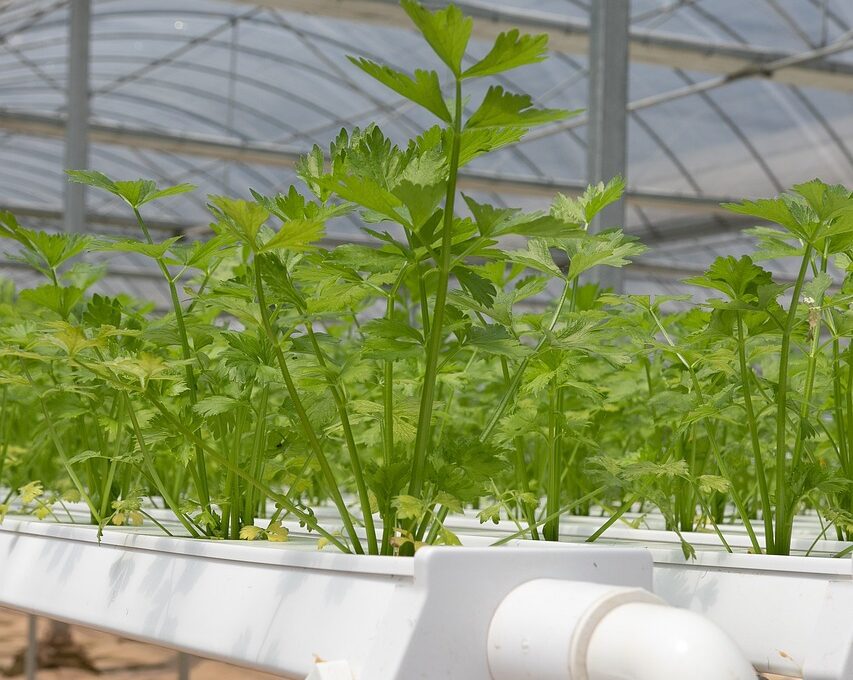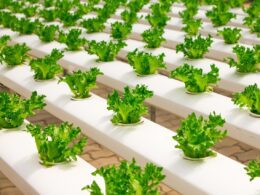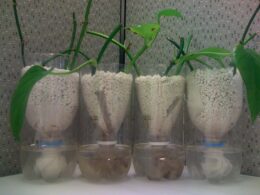Do you want to grow plants without soil? Hydroponics might be the right choice for you.
Hydroponic systems use water and nutrients to grow plants, making them a popular choice for indoor gardening. But one question you might have is whether hydroponic plants need running water. In this article, we will explore the benefits and drawbacks of using running water in hydroponic systems, as well as alternative watering methods to help you choose the right system for your plants.
Running water is a popular hydroponic system that involves constantly flowing water over the plant roots. This method provides a steady supply of nutrients to the plants, as well as oxygen and water.
But is it necessary for hydroponic plants to have running water? Are there any drawbacks to this method? We’ll answer these questions and more, so keep reading to learn all about hydroponic watering systems.
Understanding Hydroponic Systems
Get ready to explore how hydroponic systems work! Hydroponics is a method of growing plants without soil, using water and nutrients instead.
In order to understand if hydroponic plants need running water, it’s important to first understand the different types of hydroponic systems available. Vertical farming techniques are a popular option for hydroponic systems. They allow for plants to be grown in a vertical space, using less floor space while maximizing the number of plants grown. Nutrient delivery methods vary depending on the type of hydroponic system being used. Some systems use a constant flow of water and nutrients, while others use a flood and drain method.
So, do hydroponic plants need running water? The answer is yes, but it depends on the specific system being used. In systems where water is constantly flowing, running water is necessary for the plants to receive a constant supply of nutrients. However, in flood and drain systems, the plants only need running water during the flood stage, when the water and nutrients are delivered to the plants.
Ultimately, the type of hydroponic system used will determine whether running water is necessary for the plants to thrive.
Pros of Running Water
Running water is great because it provides a constant flow of nutrients and oxygen to your hydroponic garden. The benefits of irrigation are numerous, and running water is an essential part of any hydroponic system. Without it, the plants wouldn’t receive the nutrients they need to grow healthy and strong.
In addition, running water helps to prevent the buildup of harmful bacteria and fungus that can lead to disease and pest infestations. Watering frequency is another important factor when it comes to hydroponic gardening. With a constant flow of water, you can ensure that your plants are getting the right amount of moisture without the risk of over or under watering.
Over watering can lead to root rot and other plant diseases, while under watering can cause stunted growth and poor yields. Running water helps to maintain the perfect balance of moisture for your hydroponic plants.
Overall, the pros of running water in a hydroponic system are clear. It provides a consistent supply of nutrients and oxygen, helps to prevent the buildup of harmful bacteria and fungus, and ensures that your plants receive the right amount of moisture. So, if you’re considering starting a hydroponic garden, be sure to include running water as part of your system for the best results.
Cons of Running Water
You might be surprised to learn that there are some drawbacks to using a constant flow of water in your hydroponic system. One of the main concerns is the watering frequency. With running water, plants can be overwatered and drowned, which can lead to root rot and other fungal diseases. This can be especially true for seedlings or plants with delicate root systems.
Another issue with running water is the risk of stagnant water. When water is constantly flowing, it can accumulate in certain areas, creating pockets of stagnant water. This can become a breeding ground for harmful bacteria and pests, which can quickly spread to other plants in your hydroponic system. Additionally, stagnant water can cause nutrient imbalances in your solution, leading to poor plant growth and yield.
While running water may seem like the ideal solution for your hydroponic system, it’s important to weigh the pros and cons. If you do decide to use a constant flow of water, be sure to monitor the watering frequency and take steps to prevent stagnant water. By doing so, you can ensure that your plants grow healthy and strong, without the risks associated with running water.
Does Boiling Water Remove Chlorine for Hydroponic Plants?
Boiling water and chlorine removal are commonly used methods to purify water before using it for hydroponic plants. Boiling water can effectively remove chlorine by vaporizing it, making the water safer for plants. However, it is essential to let the water cool down before using it to avoid damaging the root system. Alternatively, using a chlorine removal agent can also eliminate chlorine, ensuring optimal conditions for hydroponic plant growth.
Alternatives to Running Water
Using alternatives to constant water flow in hydroponic systems can provide benefits such as reduced risk of root rot and bacterial growth. One such alternative is drip irrigation, which involves slowly dripping water onto the roots of plants. This method allows for precise control of the amount of water each plant receives, reducing the risk of overwatering and underwatering.
Drip irrigation also helps to maintain a consistent level of moisture in the growing medium, which can be especially important for plants that are sensitive to fluctuations in moisture levels. Another alternative to constant water flow is the use of capillary mats. These mats are made of a material that absorbs water and wicks it up to the roots of plants.
Capillary mats can be a good option for smaller hydroponic setups or for plants that are not as sensitive to moisture levels. They can also help to reduce water usage by providing a more efficient way to deliver water to plants. While running water can be an effective way to deliver nutrients and oxygen to plants in a hydroponic system, there are also alternative methods that can be just as effective.
Drip irrigation and capillary mats are two such alternatives that can provide benefits such as reduced risk of root rot and bacterial growth, as well as more precise control over the amount of water each plant receives. By exploring alternative methods of water delivery, you can help to ensure the health and safety of your hydroponic plants.
Choosing the Right Watering System
Choosing the right watering system can make all the difference in ensuring healthy and thriving crops in your hydroponic setup.
One option to consider is drip irrigation, which involves slowly dripping nutrient-rich water directly onto the plant’s roots. This system not only conserves water but also ensures that the roots receive a steady supply of nutrients.
Another factor to consider is nutrient delivery. Many hydroponic systems use a recirculating system to deliver nutrients, which involves circulating nutrient-rich water through the plants’ roots and back into the reservoir. This method not only saves water but also ensures that the plants receive the proper amount of nutrients. However, it’s important to monitor the pH and nutrient levels regularly to prevent any imbalances that could harm the plants.
Ultimately, the right watering system for your hydroponic setup will depend on various factors, including the type of plants you’re growing, the size of your system, and your personal preferences.
Take the time to research and experiment with different systems to find the one that works best for you. With the right watering system, you can ensure that your hydroponic plants thrive and produce healthy, delicious crops.
Frequently Asked Questions
How much water should be used in a hydroponic system?
When it comes to hydroponic systems, water circulation is key. You want to make sure that your plants are receiving enough water, but not too much. The amount of water you use will depend on the size of your system and the type of plants you’re growing.
It’s important to monitor the water quality to ensure that it’s free from harmful bacteria and contaminants. To keep the water circulating, you can use a pump or other circulation system. This will help distribute nutrients evenly throughout the system and keep your plants healthy.
Remember to check the water levels regularly and adjust as needed. By maintaining proper water circulation and quality, you can ensure that your hydroponic plants thrive.
What nutrients should be added to the water in a hydroponic system?
To ensure your hydroponic plants thrive, it’s important to maintain a proper pH balance and nutrient ratios in the water. The pH level should be between 5.5 and 6.5 for most plants, and a testing kit can help you monitor this.
As for nutrient ratios, it’s important to provide the right balance of macronutrients (like nitrogen, phosphorus, and potassium) and micronutrients (like iron and zinc). You can purchase pre-made nutrient solutions or mix your own using fertilizer salts. It’s important to follow the instructions carefully and avoid over-fertilizing, which can harm your plants.
By paying attention to pH balance and nutrient ratios, you can ensure your hydroponic plants have the best chance of growing strong and healthy.
Can tap water be used in a hydroponic system?
When it comes to water quality in hydroponic systems, tap water may not always be the best option. Depending on your location, tap water can contain high levels of minerals and chemicals that can harm your plants.
To ensure the health and growth of your hydroponic plants, it’s recommended to use alternative water sources such as filtered or distilled water. These options remove harmful additives and provide a clean slate for adding the necessary nutrients to your hydroponic system.
By using clean water, you can give your plants the best chance for success and avoid any potential harm caused by tap water.
What types of plants can be grown in a hydroponic system?
If you’re interested in vertical farming, hydroponic systems are a great way to grow a variety of plants. You can control the environment in which your plants grow, leading to faster growth and higher yields. One of the major benefits of hydroponic systems is that they use less water than traditional farming methods, making them more environmentally friendly.
In addition, hydroponic systems can grow plants year-round, regardless of the weather outside. Whether you’re growing herbs, lettuce, or even strawberries, a hydroponic system can help you achieve great results. So why not try out this innovative way of gardening and reap the rewards of hydroponic farming?
How often should the water be changed in a hydroponic system?
To maintain healthy plants in your hydroponic system, it’s important to change the water regularly. The frequency depends on multiple factors, including the size of your system, the type of plants you’re growing, and the temperature of your environment. Generally, you should change the water every two to three weeks.
However, if you’re growing fast-growing plants, you may need to change the water more frequently. Using filtered water in your hydroponic system has many benefits, including reducing the risk of plant disease and ensuring that your plants receive the proper nutrients.
Additionally, warmer temperatures can increase the frequency of water changes, so it’s important to monitor the temperature of your system regularly. By maintaining a consistent water change schedule and using filtered water, you can ensure that your hydroponic plants thrive.
Conclusion
So, do hydroponic plants need running water? The answer is, it depends on the type of hydroponic system you have and your personal preferences.
While running water can provide a constant flow of nutrients and oxygen to your plants, it can also increase the risk of waterlogging and disease. However, there are other watering systems you can use, such as drip irrigation or ebb and flow systems, that can provide the same benefits without the drawbacks.
When choosing a watering system, it’s important to consider the needs of your specific plants and the environment they are growing in. Factors such as temperature, humidity, and light can all impact how much and how often your plants need water.
By taking the time to research and experiment with different watering methods, you can find the perfect solution for your hydroponic garden and help your plants thrive.









